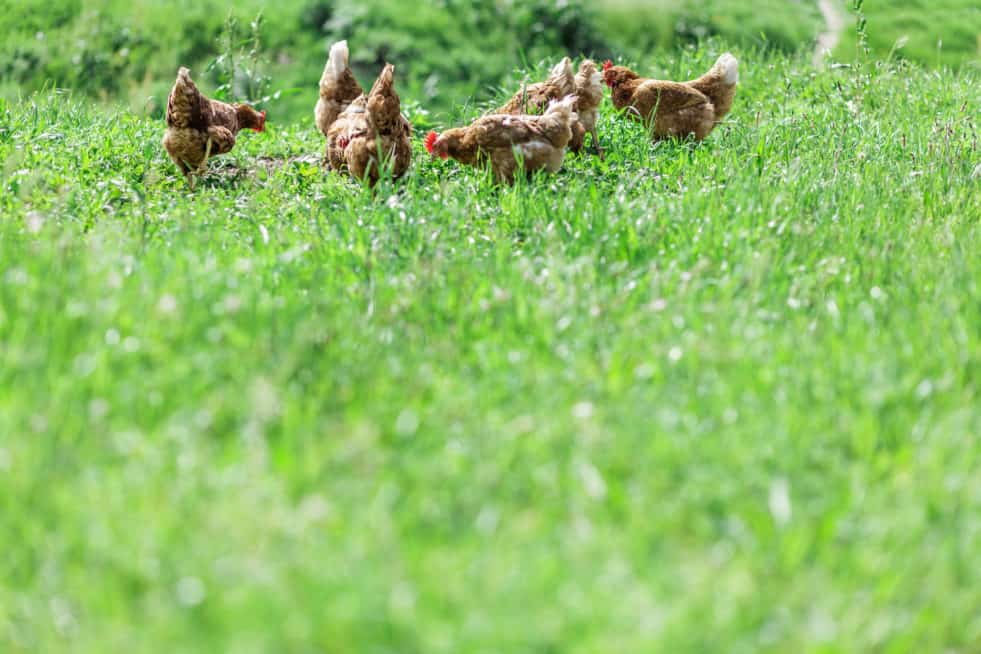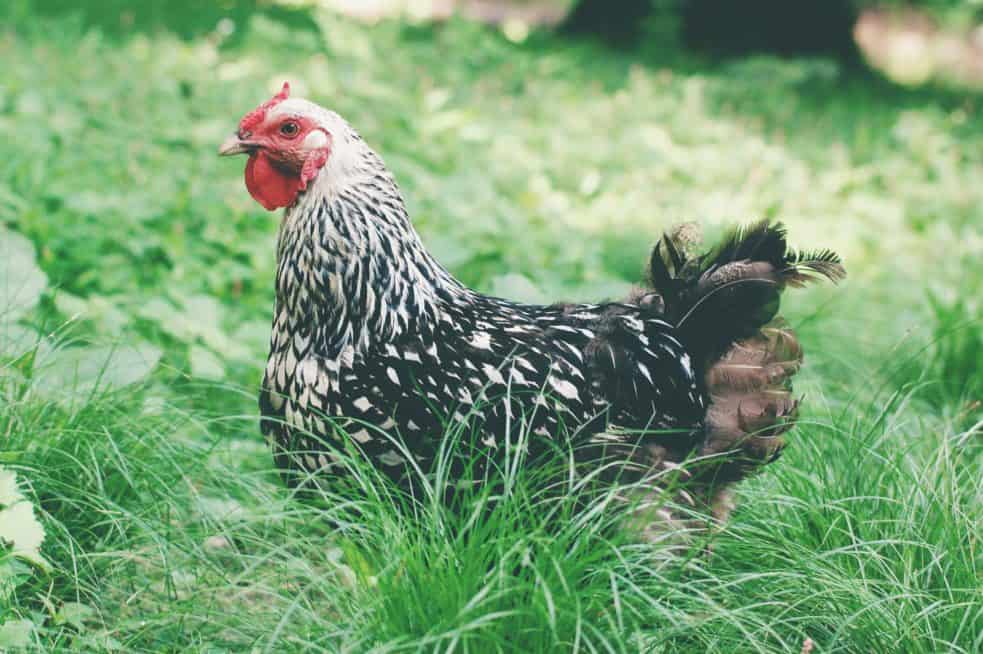What this claim means
A “pasture raised” claim on meat, poultry, dairy, or egg labels means that the animals were raised for at least some portion of their lives on pasture or with access to a pasture, not continually confined indoors. Raising animals on pasture is not the industry standard; the vast majority of dairy cows and beef cattle are confined indoors or in outdoor feedlots for a portion of their lives and fed a high-grain feed ration, rather than being allowed to graze on pasture. The vast majority of chickens and pigs are raised inside with no access to the outdoors.
However, government agencies have no common standard that producers have to meet to make a “pasture raised” claim on a food label, no definition for “pasture,” and no requirement for the claim to be verified through on-farm inspections.
On beef and dairy products, a “pasture raised” claim on the label does not mean that the cows derived all their nutrition from grazing on pasture or that they were 100 percent grass fed. Cows that are raised on pasture can be given supplemental grain, both during the grazing season and winter months. Consumers wanting to buy dairy or beef from cows that were 100 percent grass fed should look for a verified “grass fed” claim.
Why it matters
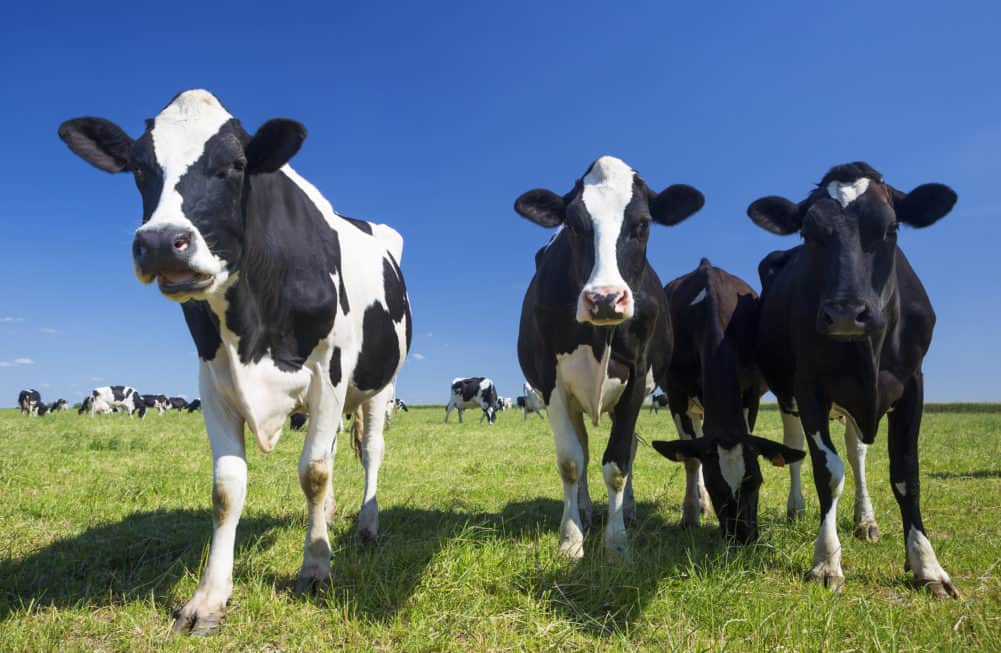
Dairy
The natural diet of a cow is grass, and grazing on pasture is an important natural behavior for cows. However, the vast majority of lactating dairy cows in the U.S. (80.1 percent) are not kept on pasture but rather housed indoors and fed corn and soy in addition to hay to increase milk production.
When cows are given access to pasture during the grazing season and acquire at least some of their nutrition from grazing, the milk they produce is higher in beneficial omega-3 fatty acids and has a more favorable omega-6 to omega-3 fatty acid ratio, compared with milk from grain-fed cows.
Eggs
Nearly all laying hens in the U.S. are raised indoors, with no access to the outdoors. In fact, the vast majority (90 percent) of laying hens are confined in small cages for their entire lives.
For chickens used in the production of poultry and eggs, outdoor runs and pasture offer the opportunity to forage, which is an important natural behavior. When given the opportunity, chickens will spend a majority of their active time foraging, which consists of pecking, scratching, harvesting seeds, and eating insects. When chickens are unable to engage in natural foraging behaviors, welfare problems such as feather pecking can arise.
Some preliminary research on the nutritional content of eggs suggests that egg yolks from hens raised on pasture have favorable omega-6 to omega-3 fatty acid ratio, which is considered beneficial for health.
How meaningful is the label?
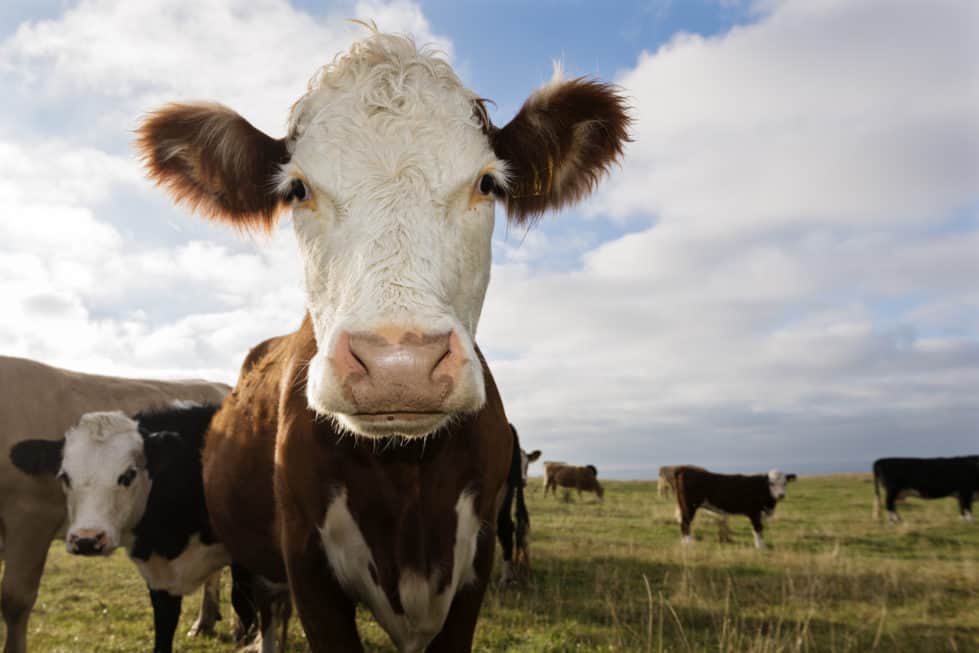
On dairy and egg labels, the claim is not meaningful because there is no common standard for producers making a “pasture raised” claim and no requirement for verification.
On meat and poultry labels, the claim is somewhat meaningful. Producers making a “pasture raised” claim are required to explain the term on the label, but the USDA allows producers to write the explanation and therefore define the term.
In our 2016 survey, when consumers were told that the USDA often allows companies to set their own standards on meat, the clear majority (94 percent) of consumers said companies should meet the same standards for labels on meat, rather than setting their own standards.
Consumers wanting to buy meat, poultry, dairy, or eggs from animals that are raised on pasture should not rely on the “pasture raised” labeling claim alone. Those consumers should look for additional labels that indicate that meaningful standards for access to pasture were met.
Is the claim verified?
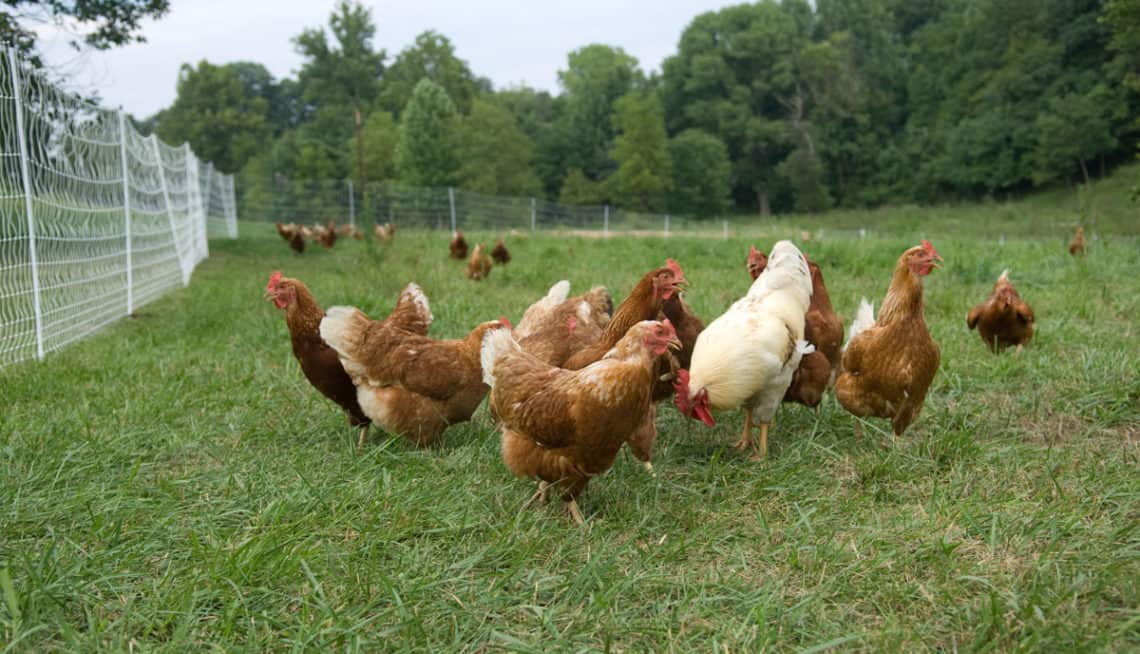
Sometimes.
On dairy and eggs. The Food and Drug Administration oversees labeling on dairy and eggs. The agency has no common standard for producers to make a “pasture raised” labeling claim and does not require it to be verified.
On meat and poultry. The U.S. Department of Agriculture (USDA) requires labels on meat and poultry with a “pasture raised” claim to be approved by USDA staff. The agency requires that companies explain the “pasture raised” claims on the label with additional terminology to define the meaning of the claim.Companies submit a one-time label application with documentation that supports the “pasture raised” claim. Supporting documentation includes:
- A detailed written description explaining controls for ensuring that the animals are raised in a manner consistent with the meaning of the claim that is valid from birth to harvest or the period of raising referenced by the claim;
- A signed and dated document describing how the animals are raised to support that the claims are not false or misleading;
- A written description of the product tracing and segregation mechanism from time of slaughter or further processing through packaging and wholesale or retail distribution;
- A written description of the identification, control, and segregation of non-conforming animals/product.
USDA staff only conducts a one-time desk audit (reviewing paperwork submitted by the company) but does not conduct annual audits or on-farm inspections. Third-party certification of the claim is not required.

What additional information on the label tells you the claim has been verified?
These seals mean the “pasture raised” claim is verified and meaningful:
American Grassfed
The American Grassfed seal on beef and dairy means that the animals were raised on pasture or range and never fed grain. The American Grassfed seal on beef means the cattle were never confined in a feedlot. The label is highly meaningful and verified.
Animal Welfare Approved
The Animal Welfare Approved seal on meat, poultry, dairy, and eggs means that the animals were raised on pasture. Chickens can be kept indoors without access to pasture for up to 28 days, but only in emergency situations or extreme weather conditions that could affect the birds’ welfare.
PCO Certified 100% GrassFed
The PCO Certified 100% GrassFed label means that the dairy cows were raised according to the federal organic standards, which require access to pasture during the grazing season. The PCO Certified 100% GrassFed standards go further than the federal organic standards by requiring 100 percent of the cow’s feed to be derived from pasture or forage, with no grain in the diet.
NOFA-NY 100% Grassfed
The NOFA-NY 100% Grassfed label means that the dairy cows were raised according to the federal organic standards, which require access to pasture during the grazing season. The NOFA-NY 100% Grassfed standards go further than the federal organic standards by requiring that 100 percent of the cow’s feed is derived from pasture or forage, with no grain in the diet.
USDA Organic (dairy and beef only)
The organic claim on a food label and the USDA Organic seal mean the food was grown, raised, and processed in accordance with the federal organic standards. For dairy and beef cows, the organic standards require access to pasture and daily grazing during the grazing season. Pasture is defined as “land used for livestock grazing that is managed to provide feed value and maintain or improve soil, water, and vegetative resources.” While organic dairy and beef cows are raised on pasture during the grazing season, they are not required to be fed only grass and forage; in fact, the standards require only 30 percent of the cow’s feed to be derived from pasture, and beef cattle are exempt from this requirement for their last 120 days (or one fifth of the animal’s total life, whichever is shorter).
For chickens and laying hens, the organic standards do not require the birds to be raised on pasture.
Certified Humane Raised and Handled + Pasture Raised (eggs only)
If a carton of eggs has both a “pasture raised” claim and the Certified Humane Raised and Handled seal, it means the “pasture raised” claim was verified, and the hens were given roughly 10 by 10 feet of pasture per bird (the standards have an outdoor space requirement of no more than 1,000 birds per 2.5 acres, which translates to 108 square feet per bird).
The standards also require that fields consist mainly of living vegetation and are actively managed to encourage birds outside; prevent or minimize heavily degraded, muddy, or worn areas; minimize the buildup of agents that may cause disease; and prevent hens from coming into contact with any toxic substances.
The pasture has to be rotated, and the hens must be outdoors year-round. While the hens are raised on pasture, the standards require mobile or fixed housing where the hens can go inside at night for protection from predators. Hens can be confined in the housing for up to two weeks out of the year, but only in cases of very inclement weather.
Humane Farm Animal Care does not have standards for “pasture raised” dairy or meat.
American Humane Certified + Pasture Raised (eggs only)
If a carton of eggs has both a “pasture raised” claim and the American Humane Certified seal, it means that “pasture raised” claim was verified, and the hens were given roughly 10 by 10 feet of pasture per bird (the standards have an outdoor space requirement of no more than 1,000 birds per 2.5 acres, which translates to 108 square feet per bird). [G page 98] The fields must be rotated and have a substantial cover of living vegetation. The pasture has to be actively managed with reseeding to encourage regrowth of vegetation.
The American Humane Association does not have standards for “pasture-raised” dairy or meat.
Global Animal Partnership Steps 4 to 5+ (beef cattle and pigs)
The Global Animal Partnership certification program has tiered step levels, each representing a different set of standards for raising farm animals. Steps 4 through 5+ for beef cattle mean the animals are raised on pasture. The label is verified. Step 4 for pigs means animals over two weeks of age are given continuous access to pasture. The Step 4 standards require that pigs are rotated once the pasture has reached 25 percent coverage with vegetation. Global
Animal Partnership Steps 5 and 5+ (all animals)
The Global Animal Partnership certification program has different step levels that each represent a different set of standards for how animals are raised on the farm. Chickens and pigs raised according to Steps 5 and 5+ live on pasture. The label is verified.
These labels have some requirements for “pasture raised,” but the standards fall short in providing meaningful pasture access:
Global Animal Partnership Step 4 (chickens)
The Global Animal Partnership certification program has a series of step levels, each representing a different set of standards for how animals are raised on the farm. Step 4 for chickens means the animals live in an enriched outdoor area.
The “pasture raised” claim on labels with these additional seals is not meaningful:
Certified Humane Raised and Handled (on its own, without a “pasture raised” claim on the label)
The Certified Humane Raised and Handled seal does not mean the animals were raised on pasture. In fact, they could have been continually confined indoors or in a feedlot. does not mean that the animals were raised on pasture or never continually confined indoors or in a feedlot. The seal only provides assurance that the animals were raised on pasture when the seal appears on an egg carton with the “pasture raised” claim.
American Humane Certified (on its own, without a “pasture raised” claim on the label)
The American Humane Certified seal does not mean that the animals were raised on pasture. In fact, they could have been continually confined indoors or in a feedlot. The seal only provides assurance that the animals were raised on pasture when the label appears on an egg carton with the “pasture raised” claim.
USDA Organic (chicken and eggs)
The organic standards only require access to pasture during the grazing season for ruminants, but there is no such requirement for pigs and chickens. The organic seal therefore does not guarantee that pigs, chickens, and turkeys were raised on pasture.
Global Animal Partnership Steps 1-3
The Global Animal Partnership certification program has a series of step levels, each representing a different set of standards for raising farm animals. In Steps 1 and 2, chickens and pigs can be raised indoors with no access to pasture or range. In Step 3, chickens and pigs have access to an outdoor space, but this space can be very small and lacking vegetation. Beef cattle raised under Steps 1 and 2 can be removed from pasture and confined in a feedlot. (There is no Step 3 for beef cattle.) The label is verified.
